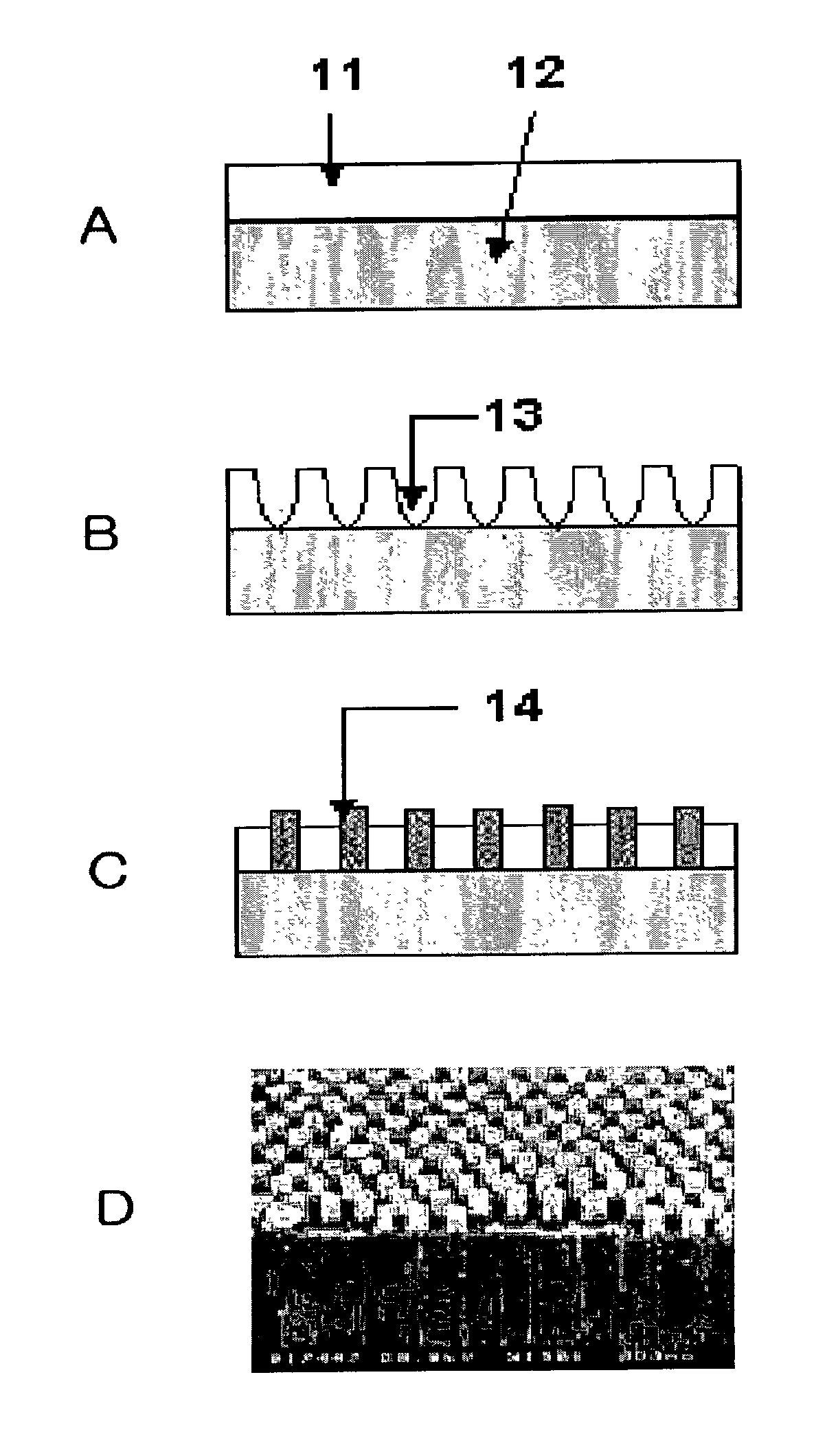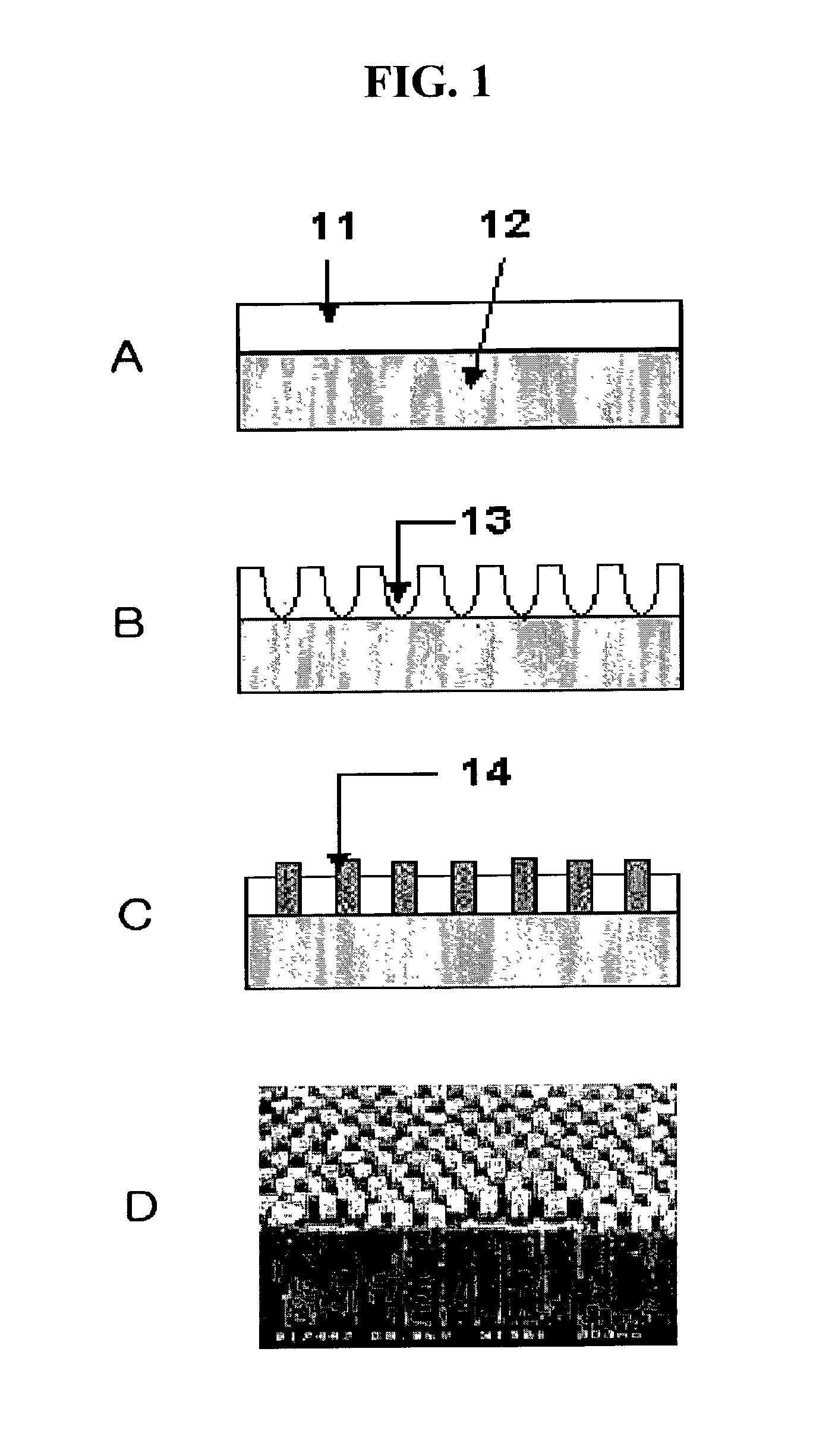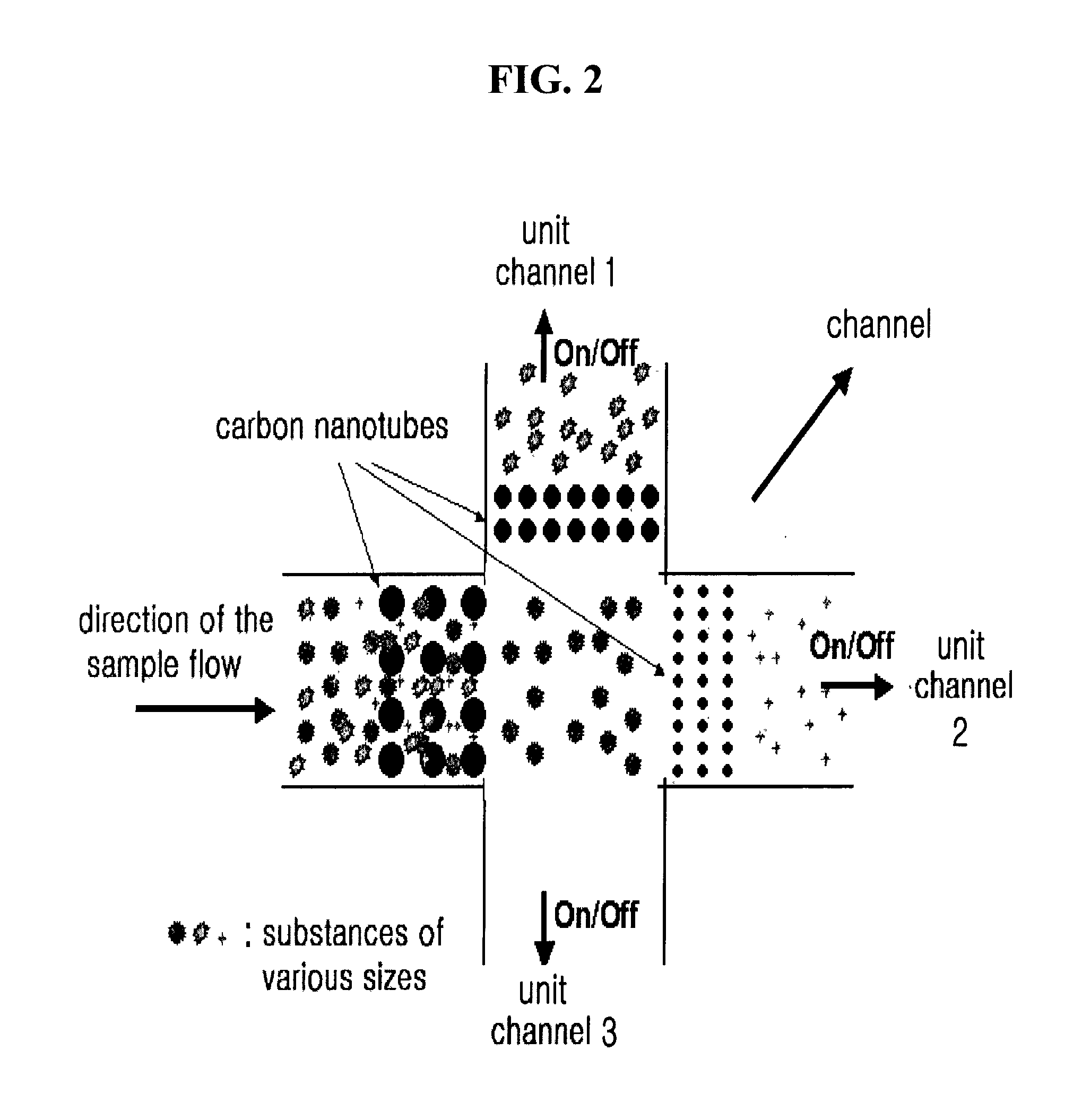Biochip including carbon nanotubes and method for sample separation using the same
a carbon nanotube and biochip technology, applied in the field of biochips, can solve the problems of difficult to achieve reliable data, apply pre-treatment technology, and difficult to make uniform spaces with nanometer size in the chip using these methods
- Summary
- Abstract
- Description
- Claims
- Application Information
AI Technical Summary
Benefits of technology
Problems solved by technology
Method used
Image
Examples
example 2
Separating or Filtering Biological Samples Using Carbon Nanotubes Inside the Channels
[0039] FIG. 2 illustrates one or more channels or chambers, each including a plurality of carbon nanotubes arrayed in various intervals. The channels or chambers can be used not only as a filtration device but also as a separation device. A force such as an electric field, a pressure, a vacuum, an electromagnetic field, and a centrifugation force may be applied to the channel so as to flow a fluid sample containing various substances.
[0040] For instance, a sample having a target substance and other various substances is disposed on the carbon nanotubes (which have different sizes and array patterns in each unit channel). Then, the sample may be moved in one direction by opening one or more unit channels extending in a sample flow direction and closing the remaining unit channel(s). Alternatively, a switch valve can be used to open and close the channels. By repeated opening and closing of the unit c...
example 3
Separation of White Blood Cells from Whole Blood
[0044] FIG. 4 shows a schematic diagram of a process for separating white blood cells from whole blood in the channels of a chip. The white blood cells can pass through the carbon nanotubes in a channel when the intervals between the carbon nanotubes are about 10 to about 20 micrometers. When the intervals between the carbon nanotubes are about 3.5 to about 5 micrometers, the white blood cells cannot pass through the carbon nanotubes, and only red blood cells can pass through and flow to downstream of the channels.
[0045] According to the present invention, a substance can be selectively separated or filtered from a sample having various substances based on its size. Further, the carbon nanotubes can be formed in channels or chambers of various geometrical shapes. Therefore, biochip having both high quality and various designs can be provided.
[0046] Further, in the present invention, carbon nanotubes of different sizes may be prepared f...
PUM
| Property | Measurement | Unit |
|---|---|---|
| Length | aaaaa | aaaaa |
| Length | aaaaa | aaaaa |
| Pressure | aaaaa | aaaaa |
Abstract
Description
Claims
Application Information
 Login to View More
Login to View More - R&D
- Intellectual Property
- Life Sciences
- Materials
- Tech Scout
- Unparalleled Data Quality
- Higher Quality Content
- 60% Fewer Hallucinations
Browse by: Latest US Patents, China's latest patents, Technical Efficacy Thesaurus, Application Domain, Technology Topic, Popular Technical Reports.
© 2025 PatSnap. All rights reserved.Legal|Privacy policy|Modern Slavery Act Transparency Statement|Sitemap|About US| Contact US: help@patsnap.com



